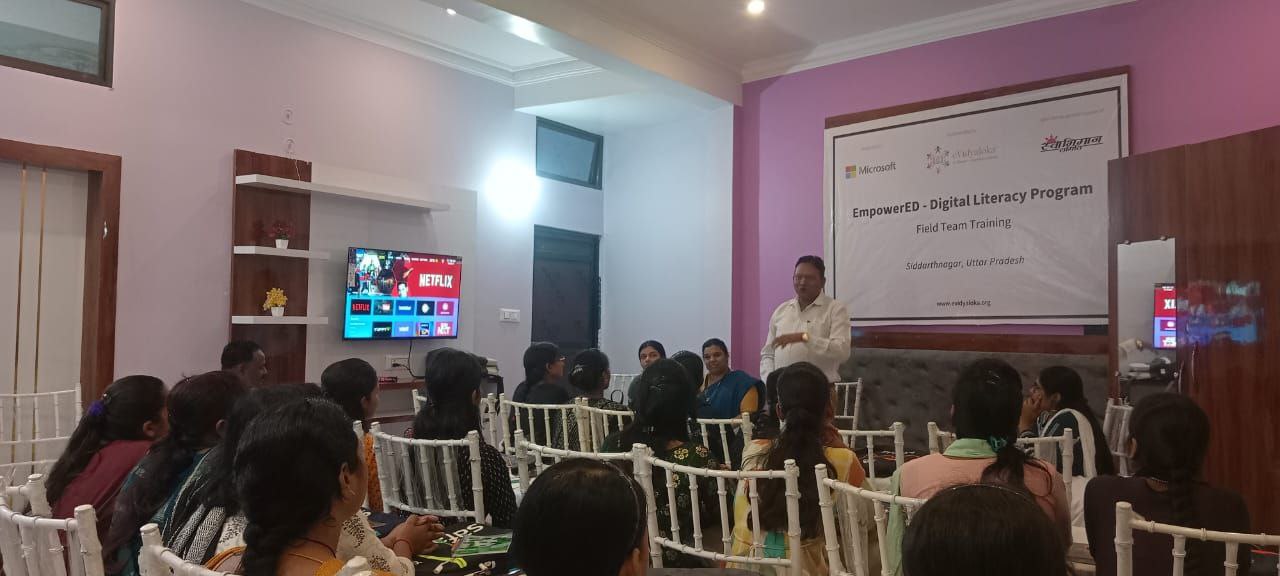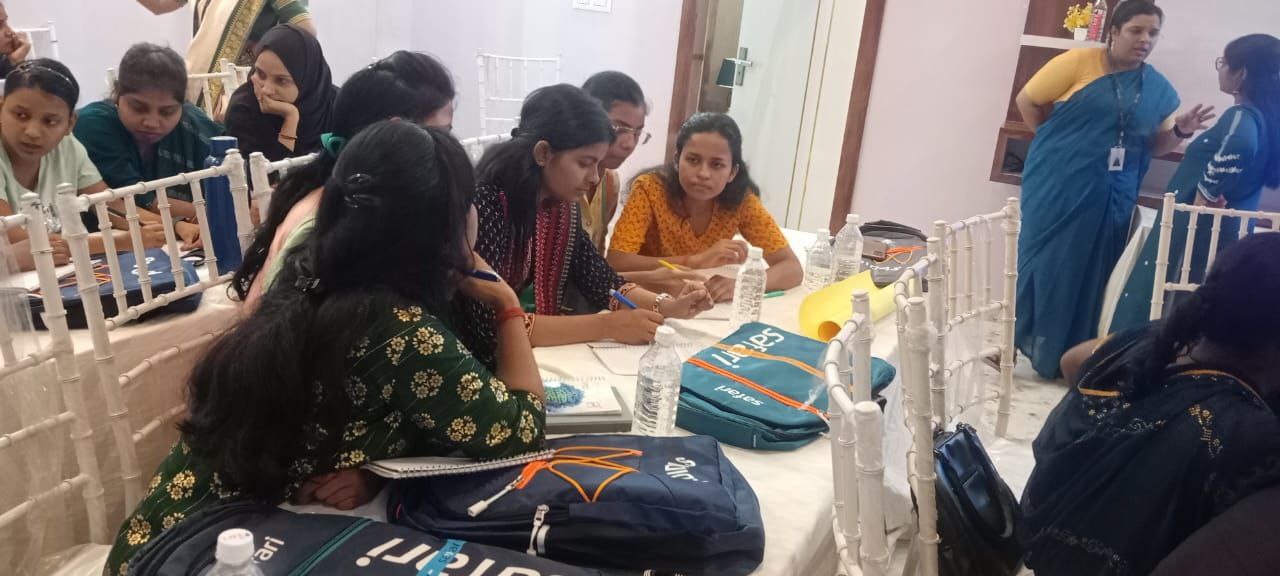Survey on Educational Levels of Children Aged 6 to 14 Years in Maharajganj District (ASER 2007)
To assess the educational status of children aged 6 to 14 years, Swabhiman Samiti, in collaboration with Pratham, a leading organization working in the field of education, conducted a survey under the Annual Status of Education Report (ASER) 2007. The survey aimed to identify the educational levels and literacy skills of children in rural areas and contribute to a nationwide assessment of educational progress. This survey was part of a larger effort to ensure that every child has access to quality education, with a particular focus on improving learning outcomes in underserved areas.
The survey covered 30 villages in Maharajganj district, selected through random sampling, to give an accurate representation of the educational landscape in the region. Prior to conducting the survey, the volunteers of Swabhiman Samiti underwent extensive training to ensure that they were well-prepared to collect accurate and reliable data.
Objective:
The primary objectives of the survey were:
- To assess the educational levels of children aged 6 to 14 years in Maharajganj district.
- To identify learning gaps and areas of improvement in the education system.
- To provide critical insights into the literacy rates, numeracy skills, and overall educational development of children.
- To contribute to the Annual Status of Education Report (ASER), a nationwide survey that tracks progress in the education sector.
Methodology:
- Random Sampling: The survey was conducted across 30 villages in Maharajganj district. The villages were selected using random sampling techniques to ensure the results were representative of the region’s educational landscape.
- Survey Tools: A standardized set of tests and questionnaires were used to assess the educational level of children in the selected age group. The tests focused on basic literacy and numeracy skills, as well as general knowledge related to education.
- Volunteer Training: Prior to conducting the survey, Swabhiman Samiti’s volunteers underwent comprehensive training. This training focused on data collection techniques, survey methods, and ethical considerations to ensure the accuracy and integrity of the survey.
Survey Process:
- Preparation: The survey team, consisting of Swabhiman Samiti’s trained volunteers, was prepared with all necessary materials, including test papers, survey forms, and identification tools.
- Fieldwork: The volunteers visited each of the 30 villages, interacting with families and schools to administer the tests. They observed children in various settings, including homes and schools, to assess their literacy and numeracy levels.
- Data Collection: Data was collected on individual children’s ability to read simple texts, perform basic arithmetic, and their overall understanding of academic concepts at their age level.
- Compilation and Reporting: After gathering the data, the survey team compiled the results and submitted them to Pratham for inclusion in the ASER 2007 report. The data helped paint a clearer picture of the educational realities faced by children in rural Maharajganj.



Impact and Results:
The survey revealed important insights into the educational levels of children in the target age group. Some key findings include:
- Educational Disparities: Significant differences were found in literacy and numeracy levels between children attending formal schools and those who were out of school. Many children were unable to perform basic reading and arithmetic tasks at the expected grade level.
- School Enrollment: The survey showed high enrollment rates, but there were challenges in terms of retention and quality of education. Some children were attending school but were falling behind in terms of learning outcomes.
- Learning Gaps: A noticeable gap was found in the learning levels of children, especially in rural and marginalized communities. Children in remote areas were facing challenges related to infrastructure, teacher availability, and learning materials.
Challenges Encountered:
While the survey provided valuable data, several challenges were encountered during its implementation:
- Geographical Barriers: Some villages were difficult to reach due to poor infrastructure, requiring extra effort to ensure volunteers could access these areas.
- Parental Hesitation: In some cases, parents were hesitant to allow their children to participate in the survey due to concerns about privacy and the perceived purpose of the data collection.
- Language and Communication Barriers: There were instances where the language used in the surveys was not fully understood by all participants, which could have affected the accuracy of responses.
Conclusion and Future Directions:
The collaboration between Swabhiman Samiti and Pratham in conducting the ASER 2007 survey has significantly contributed to understanding the educational landscape in Maharajganj district. The findings from the survey will help shape future interventions aimed at improving education outcomes for children in this region.
Based on the results of the survey, the following steps are recommended:
- Targeted Interventions: Initiatives to address specific learning gaps, such as supplementary educational programs and remedial classes for children lagging in literacy and numeracy.
- Community Engagement: Increased community engagement to raise awareness about the importance of education and to encourage parental involvement in children’s education.
- Policy Advocacy: Advocacy for better infrastructure, teaching resources, and teacher training in rural schools to improve learning outcomes.
The results of the ASER 2007 survey will also help inform future efforts and policies related to education, with a focus on improving the quality and accessibility of education for children in Maharajganj and other rural areas. Through continued efforts, Swabhiman Samiti aims to contribute to the broader vision of educational equity and inclusion.






